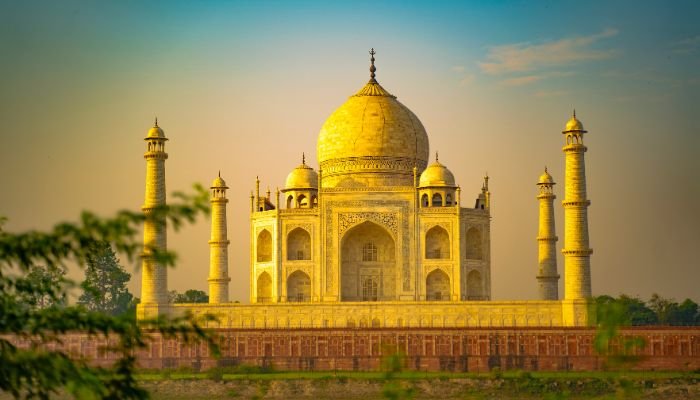It’s possible that the most recognizable structures in the world wouldn’t be your first creative thought. However, these well-known buildings can serve as inspiration for a wide range of architectural endeavors. Incredible architecture can be found all throughout the world, from the Taj Mahal to the Forbidden City in Beijing.
Learn More How to Become an Architect
These landmarks are invaluable resources for learning about the history and culture of a region or country. A building’s appearance evolves over time as maintenance fixes structural issues and updates reflect shifting aesthetic preferences. Here, we provide a selection of the world’s most renowned architectural wonders for your perusal.
Read Engineering vs Architecture: Which Is Superior?
Gaze in awe at them on the screen, or make a list of must-see destinations; in either case, you’ll want to start researching the best cameras for artists and designers or start thinking about how to improve your sketching skills. In this article, we’ll see the best architectural work in the world.
Also similar to this The World’s Top 10 Most Impressive Engineering Structures
The Indian Taj Mahal

The Taj Mahal in Agra is a monument to love and one of the Seven Wonders of the World. This renowned white heritage landmark, commissioned by the Mughal emperor Shahjahan in honor of his third wife Mumtaz, needed the work of 22,000 skilled employees, including designers, architects, stone cutters, and embroiderers. It’s amazing that it took 17 years to finish this masterpiece, which is a fusion of Islamic, Turkish, Persian, and Indian architecture. It is now widely regarded as the world’s eighth wonder.
The Beijing Forbidden Palace

The Forbidden City was built by the Ming Dynasty between 1406 and 1420 to serve as their imperial palace. The biggest number of intact wooden buildings can be seen at this historical landmark. Approximately forty percent of the Forbidden City, a museum showcasing stunning examples of Chinese architecture, is currently closed for renovations. Its massive size (7,750,000 square feet) is the result of the work of a million people. The Forbidden City has more than 8,728 rooms, 90 royal courtyards, and a grand total of 980 buildings, and has been the official residence of 24 Chinese emperors.
Turkey’s Hagia Sophia

Hagia Sophia is a prime example of Byzantine architecture; it was once a church but was later transformed into a mosque. It was originally built between the years 523 and 537 AD, but has since undergone numerous restorations due to earthquakes and civil unrest. This remarkable building, which reflects a peaceful synthesis of religious influences, harmoniously integrates parts of mosques and churches.
Palace of Buckingham, London

George III purchased Buckingham Palace in 1735, and since then it has been the subject of innumerable photographs and filming locations. It was originally a red brick home, but over time it was renovated and expanded to its present state of elegance. After being damaged by bombing during World War II, the palace underwent repair. Over its 39 acres of land, guests and staff can choose from 775 rooms, including 52 suites fit for a king and queen. One of the few palaces still occupied by its rightful occupants is Buckingham Palace.
Dubai’s Burj Khalifa

The Burj Khalifa, the world’s tallest building, is a symbol of power and prestige. This enormous building, which stands an impressive 828 meters tall, is a testament to Dubai’s architectural prowess. From a distance of 60 miles, its beautiful design is a sight to behold. The Burj Khalifa took six years to build and officially opened to the public in 2010. Daily contributions from 12,000 workers made this feat possible.
Pennsylvania town of Falling water

Built by the Kauffman family in 1934 and designed by famous American architect Frank Lloyd Wright, Fallingwater was originally a private property. The building is placed ingeniously over a 30-foot waterfall so that it appears to be floating. Its unusual design and historical significance caused it to become an instant tourist attraction.
Seattle’s iconic Space Needle

The Space Needle, which opened in 1962, is 184 meters tall and 42 meters wide and features a futuristic and magnificent design. This landmark, which was designed to resist earthquakes and high winds, has become an instant Seattle landmark and continues to wow onlookers with its forward-thinking construction.
Kuala Lumpur’s iconic Petronas Twin Towers

Postcards and other photos of the Petronas Twin Towers have been popular for years, helping to reinforce their reputation as one of the world’s most recognizable landmarks. These buildings, which were constructed between 1998 and 2003, are an impressive 451.9 meters in height and have become a symbol of the city. This is the symbol of the nation’s capital in Malaysia.
The London Cathedral of St. Paul

The roughly 112-meter dome of St. Paul’s Cathedral is the building’s most defining characteristic. It took a total of 35 years to create this London landmark, with the design concept alone taking a whole nine. Architecturally stunning, it never ceases to impress guests.
Washington, D.C. – Washington

The famous White House, designed by architect James Hoban and built between 1792 and 1801, was finished. Every president of the United States since then has lived there. The White House in Washington, D.C., is a symbol of political authority because of its construction out of Aquia sandstone that has been painted white.
Students gain priceless cultural and educational experiences by visiting these architectural masterpieces, which allow them to witness the brilliance and ingenuity of human effort throughout history.

